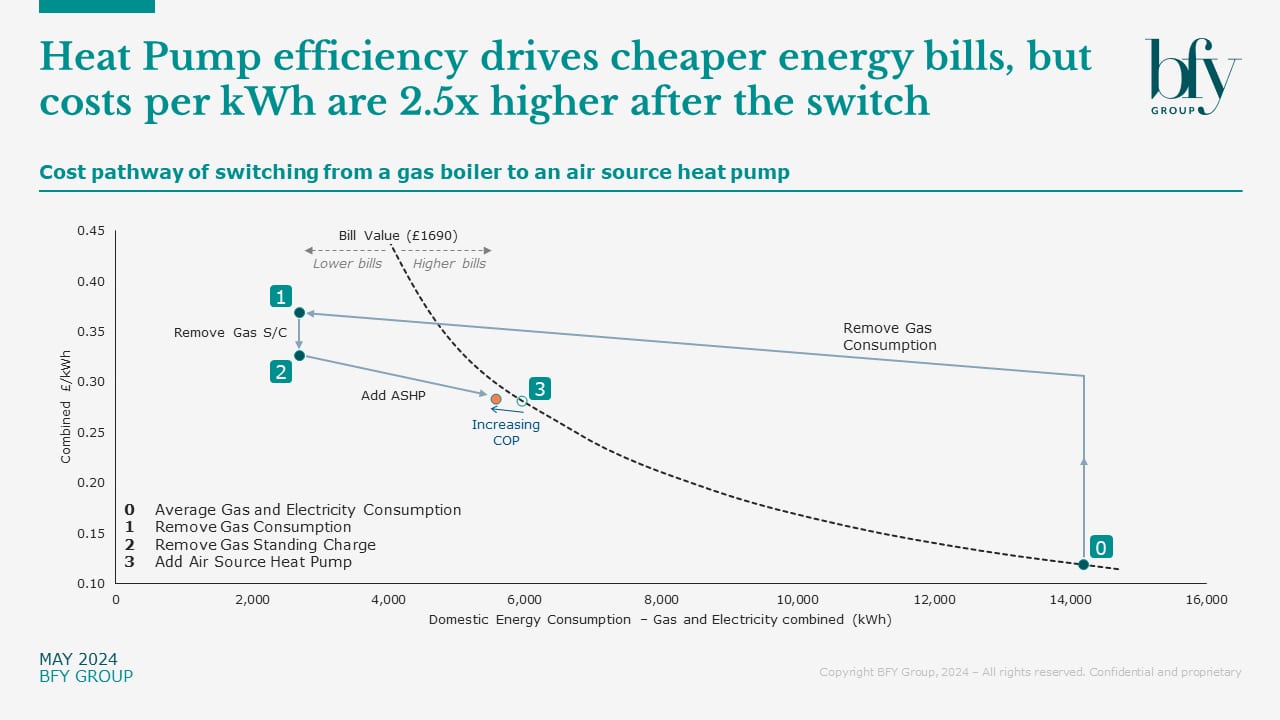Our visual demonstrates the cost pathway of switching from a gas boiler to an air source heat pump.

Air Source Heat Pumps (ASHP) could lower energy bills
- Customer savings are in part due to avoiding the gas standing charge; but critically depend on the difference between the efficiency of the existing gas boiler and the heat pump’s Coefficient of Performance (COP).
- A customer replacing a gas boiler with an ASHP pays more per kWh - but uses much less energy.
Example for a typical customer
- A customer replacing an average boiler (85%) with an ASHP with COP of 3 would pay around the same each year on energy. However, as shown on the chart, higher COP values (e.g. 3.2) would result in lower annual energy bills.
Cost challenges and incentives
- For most customers, these savings are outweighed by the capital costs of installing an ASHP because gas is not fully cost reflective – even after factoring in the cost of a new boiler if required.
- Options to rebalance gas/electricity costs have been debated with no movement: including policy cost removal from electricity, moving to general taxation, or including a cost of carbon in household gas usage. However, it’s acknowledged that each of these will create winners and losers; the latter option especially risks worsening fuel poverty for the most vulnerable households.
For more information on heat pump switching costs, contact Matt Turner or John de Bono.
Matt Turner-Tait
Senior Manager
Matt lead clients through key strategic projects exploring growth opportunities, business models, competitive advantage, and mergers & acquisitions.
View Profile

